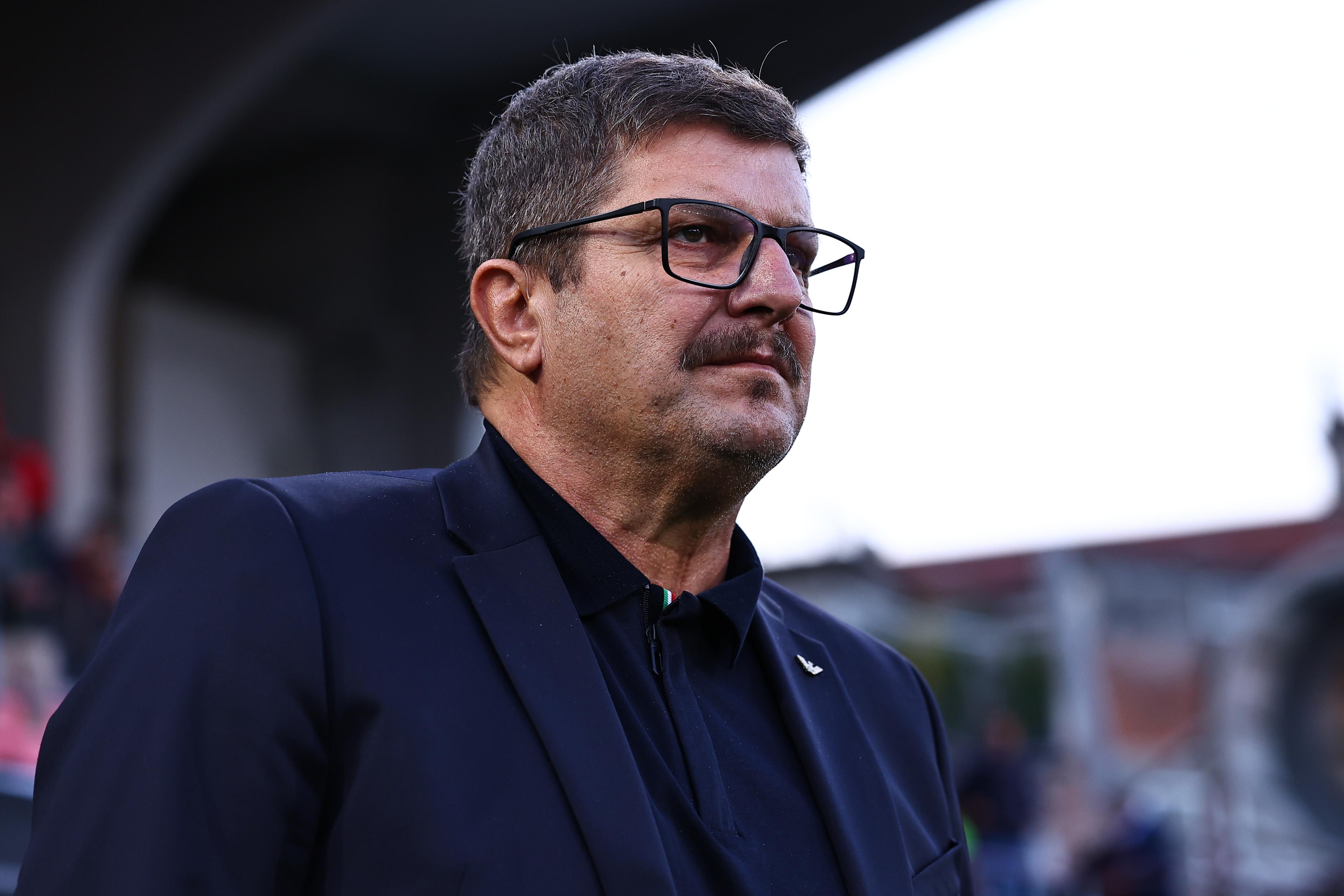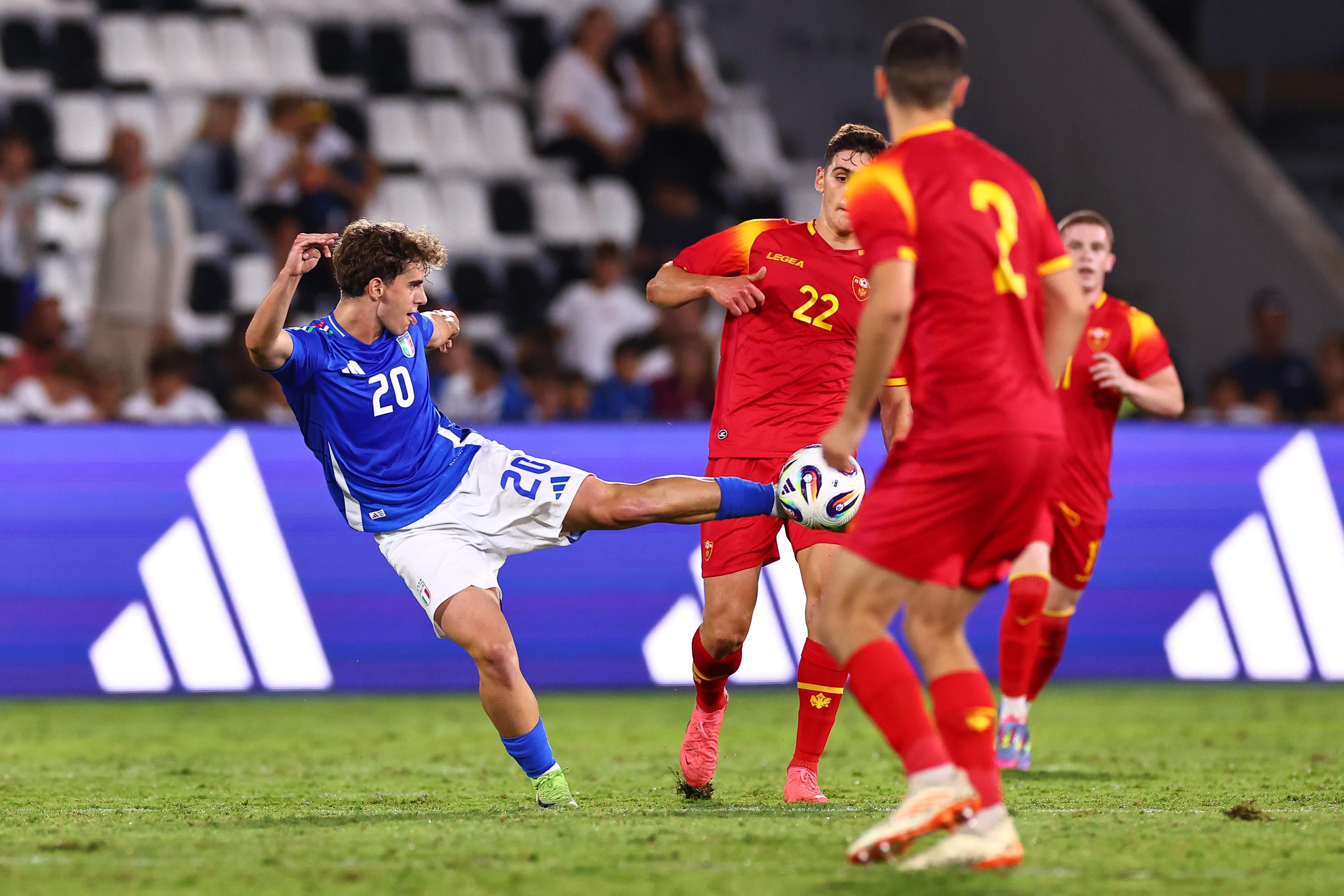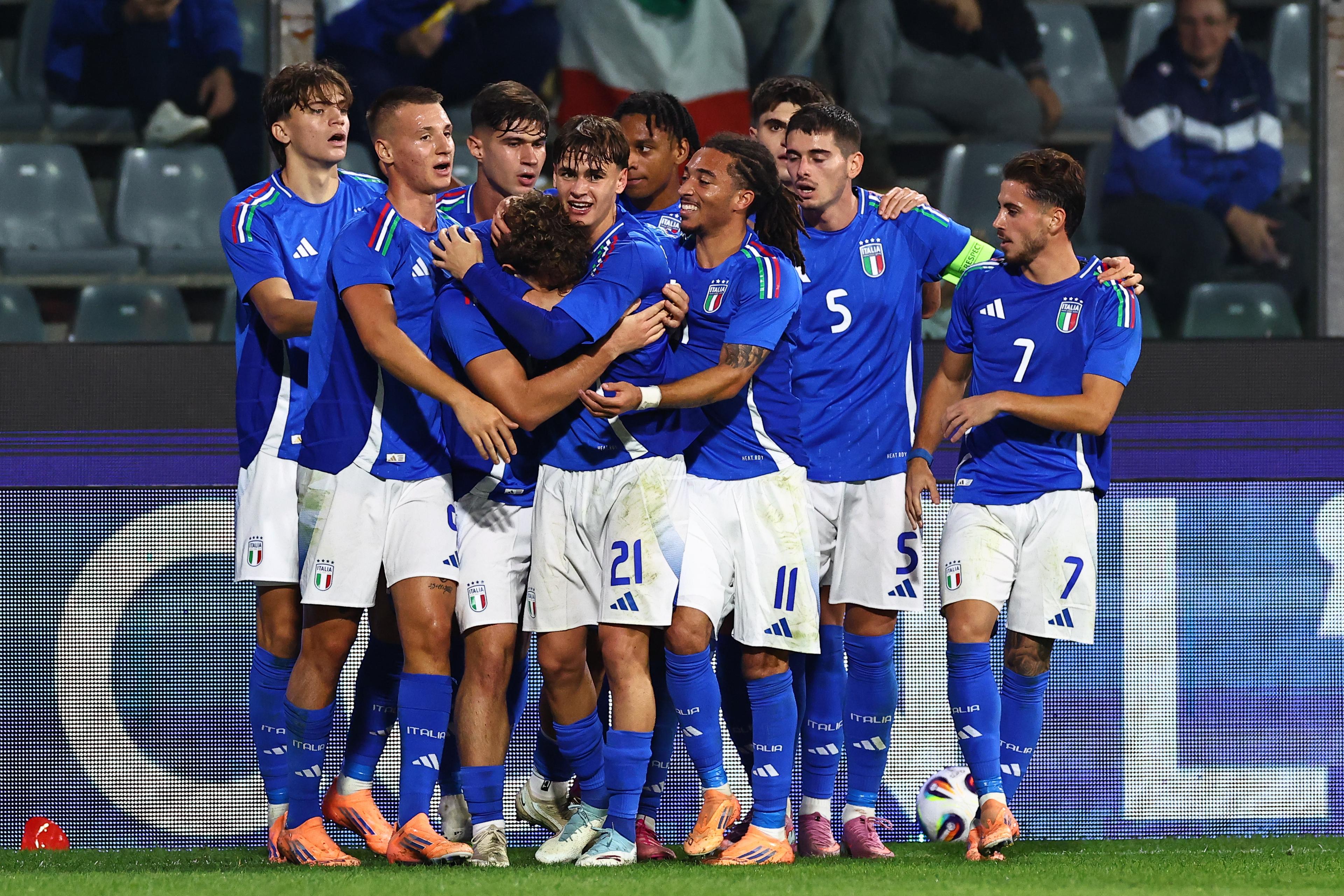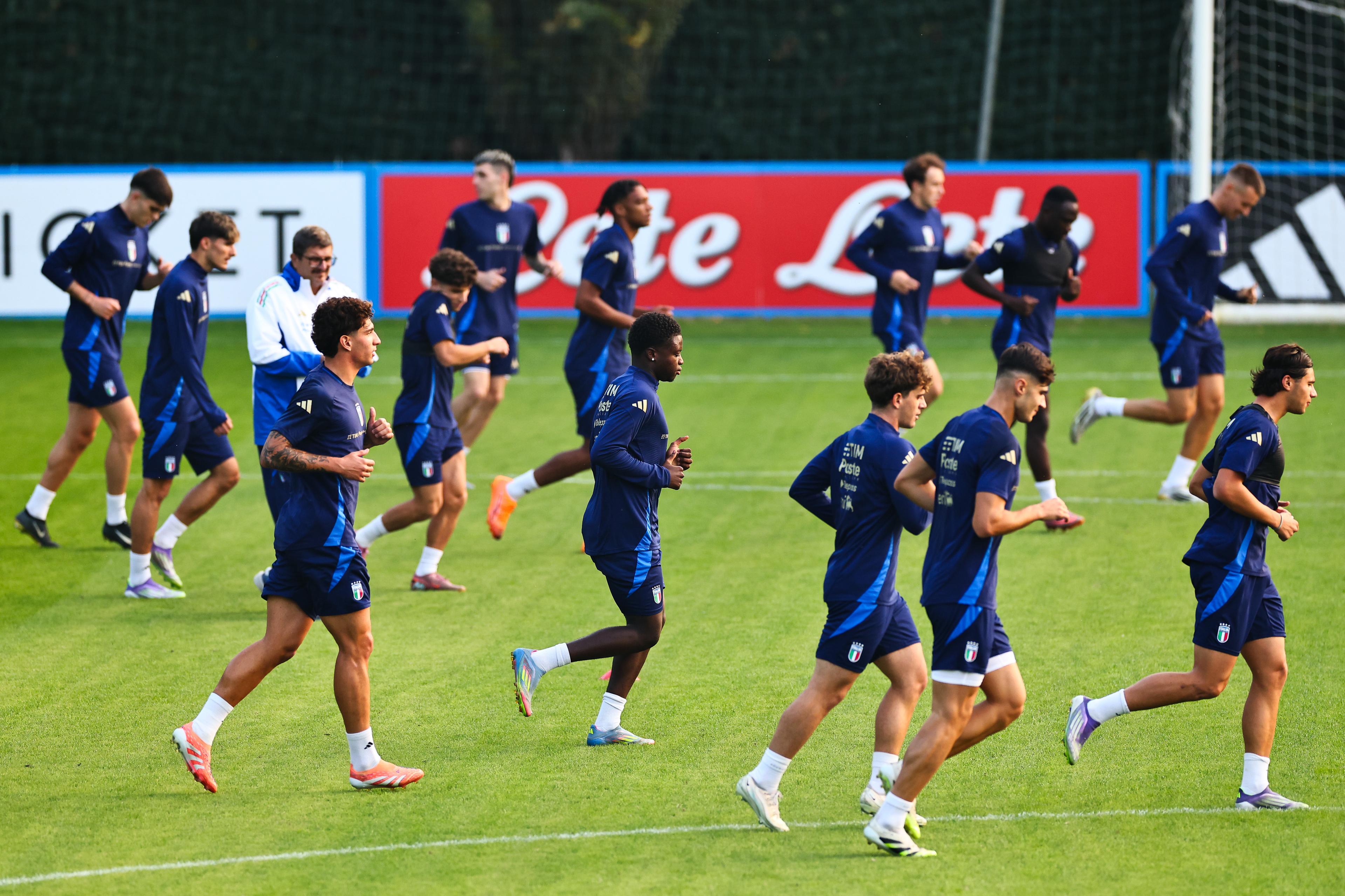PHOTO
The Under-21s will close out 2025 with two crucial trips that could prove decisive for qualification to the 2027 European Championship finals. On Friday 14 November, they have a six-pointer with Poland at the Pogon Arena in Szczecin (16:00 CET), with the Azzurrini level on points with their rivals at the top of Group E. Four days later, the Azzurrini travel to Nikšić for their return fixture against Montenegro (18:30 CET), following their 2-1 win over the same opponents in their group opener in La Spezia in September.
SQUAD. There are two new additions to the squad announced today by Silvio Baldini: Atalanta Under-23 forward Dominic Vavassori, who made six appearances and scored once for the Under-20s last season, and Frosinone defender Gabriele Calvani, who has received his first-ever Italy call-up. Also among the 25 players included is Fiorentina defender Pietro Comuzzo, who returns after the injury that forced him to leave the squad in September. From Sunday evening, the Azzurrini will gather at the Olympic Training Centre in Tirrenia (PI). They’re then scheduled to travel to Szczecin on Thursday before returning to Pisa immediately after the match. Departure for Podgorica is set for Monday.
STATE OF PLAY. In Group E of the 2027 European Under-21 Championship qualifiers, the race for top spot is a two-horse battle between Poland and Italy, both of whom have won all four of their matches so far (12 points). Behind them are Montenegro (6), Sweden and North Macedonia (3), and Armenia (0). The first half of the group stage concludes on Friday, with the return fixtures kicking off on Tuesday. The final push comes in 2026, with two matches in March and two in October, the last of which could prove decisive for first place: Italy vs. Poland on 5 October 2026.


NUMBERS. So far, the Under-21s have won all four of their matches, scoring twelve goals (an average of 3.00 per game) and conceding just two (0.50). A total of 35 players have been called up, with 24 having taken to the pitch. The latest debutant was Niccolò Fortini in Cremona, who was sent off just nine minutes after coming on (second red card of this qualifying campaign following Moruzzi’s sending-off in North Macedonia). Lipani is the only player to have played every minute (360’). Among the most used players are Koleosho (334’) and Pisilli (323’), who have also been substituted the most (three times), while Dagasso and Ekhator have come off the bench most frequently (in all four fixtures).
Six players have found the net so far: Camarda (three times), Pisilli (twice), and Berti, Dagasso, Ekhator, Fini, Lipani, Marianucci, and Koleosho (one each). Camarda’s three goals in two games give him the best goals-per-game ratio (1.50) in his first 180 minutes among Italy’s top 20 all-time U21 scorers: only Giuseppe Sculli previously achieved the same feat (a brace against Yugoslavia and a goal against Wales between 11 and 15 October 2002). Despite missing Italy’s first two qualifying games, Camarda is currently only behind Rodrigo Mora (Portugal), Lawrence (Scotland), Svanback (Finland) and Pietuszewski (Poland), who lead the scoring charts with four goals each.


OPPONENTS. Poland have won all four of their matches, scoring three more goals than Italy (15 vs. 12) while keeping a perfect defensive record, compared with the two goals conceded by the Azzurrini. The teams are set to meet for the first time in six years: the last encounter, in Bologna, saw the Poles end the tournament hopes of Di Biagio’s side on home soil with a 1-0 win. The overall head-to-head record stands at three wins apiece and six draws; in matches played in Poland, Italy have won twice and lost once, with Poland’s only victory dating back to 1970, 55 years ago. In European Championship qualifiers, Italy remain unbeaten with three wins and five draws.
Montenegro, meanwhile, sit third in the group, having collected six points from their two home matches, making the home advantage an added challenge for the Azzurrini. In the four previous meetings between the sides, Italy have won three times (including a 2-1 victory in their group opener in La Spezia on 5 September) and drawn once (1-1 in their only encounter in Montenegro, in Podgorica in 2022). Between 2003 and 2004, there were four further matches against the then Serbia and Montenegro (three wins and one defeat), including the 2004 European Under-21 Championship final in Bochum, which ended 3-0 in Italy’s favour.


WINNING STREAK. Baldini’s side, coming off four wins in the group, have the chance to match the longest winning streak by an Italian Under-21 team in European Championship history (qualifiers and finals). Since 1976–78, only twice have Italy’s U21s won six games in a row: Vicini’s teams between 1982–84 and 1991–92, and Gentile’s side in 2002–03. Across all competitions, the record for consecutive wins is eight, set by Vicini’s team (December 1982–April 1984) and Cesare Maldini’s side (November 1991–May 1992).
SQUAD LIST
GOALKEEPERS: Diego Mascardi (Spezia), Edoardo Motta (Reggiana), Lorenzo Palmisani (Frosinone).
DEFENDERS: Davide Bartesaghi (Milan), Gabriele Calvani (Frosinone), Pietro Comuzzo (Fiorentina), Niccolò Fortini (Fiorentina), Gabriele Guarino (Empoli), Riyad Idrissi (Cagliari), Filippo Mane (Borussia Dortmund), Brando Moruzzi (Empoli), Marco Palestra (Cagliari).
MIDFIELDERS: Tommaso Berti (Cesena), Matteo Dagasso (Pescara), Giacomo Faticanti (Juventus), Luca Lipani (Sassuolo), Cher Ndour (Fiorentina), Niccolò Pisilli (Roma).
FORWARDS: Francesco Camarda (Lecce), Alphadjo Cisse (Catanzaro), Luigi Cherubini (Sampdoria), Jeff Ekhator (Genoa), Seydou Fini (Genoa), Luca Koleosho (Espanyol), Dominic Vavassori (Atalanta).
